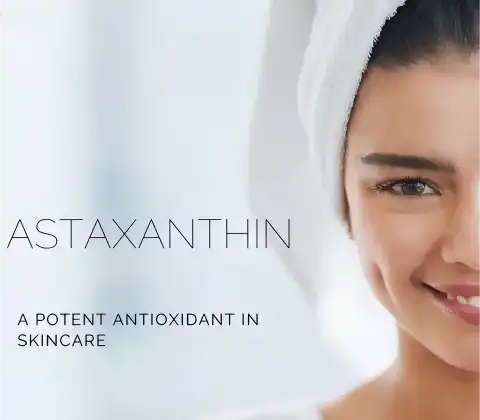Astaxanthin Powder Applications in Dietary Supplements
Astaxanthin powder has emerged as a powerful ingredient in the world of dietary supplements, offering a myriad of health benefits and applications. This potent antioxidant, derived from the microalgae Haematococcus pluvialis, has gained significant attention in the nutraceutical industry due to its exceptional free radical scavenging properties. As a versatile supplement, astaxanthin powder can be incorporated into various formulations, including capsules, tablets, softgels, and functional foods. Its vibrant red color and impressive stability make it an attractive option for manufacturers looking to enhance their product offerings. With a growing body of research supporting its potential health benefits, astaxanthin powder has found its place in supplements targeting cardiovascular health, skin vitality, eye function, and athletic performance. As consumers increasingly seek natural and effective dietary supplements, astaxanthin powder stands out as a valuable ingredient that aligns with modern health and wellness trends.

How Astaxanthin Powder Supports Antioxidant Benefits in Dietary Supplements?
Powerful Free Radical Scavenging
Astaxanthin powder is renowned for its exceptional antioxidant properties, surpassing many other well-known antioxidants in its ability to neutralize free radicals. This powerful carotenoid can effectively quench singlet oxygen and combat various types of reactive oxygen species, making it a valuable asset in dietary supplements aimed at reducing oxidative stress. The unique molecular structure of astaxanthin allows it to span the entire width of the cell membrane, providing comprehensive protection against free radical damage. In dietary supplements, astaxanthin powder can be formulated to support overall cellular health and potentially mitigate the effects of oxidative stress on various bodily systems. Its potent antioxidant capacity makes it an ideal ingredient for supplements targeting anti-aging, cardiovascular health, and immune system support.
Synergistic Effects with Other Antioxidants
Haematococcus Pluvialis Powder astaxanthin powder exhibits remarkable synergistic effects when combined with other antioxidants in dietary supplements. This complementary action can enhance the overall antioxidant profile of a supplement, providing more comprehensive protection against oxidative damage. For instance, when paired with vitamin E, astaxanthin has been shown to boost the antioxidant activity of both compounds. In formulations containing multiple antioxidants, astaxanthin powder can serve as a cornerstone ingredient, amplifying the benefits of other antioxidants and potentially offering a more robust defense against free radicals. This synergistic approach allows supplement manufacturers to create more effective and multifaceted antioxidant blends, catering to consumers seeking comprehensive oxidative stress protection.
Bioavailability and Absorption
The bioavailability of astaxanthin powder is a crucial factor in its effectiveness as a dietary supplement ingredient. Unlike some other carotenoids, astaxanthin does not convert to vitamin A in the body, allowing it to exert its antioxidant effects more directly. To enhance absorption, astaxanthin powder is often formulated with lipid-based carriers or emulsifiers in dietary supplements. This approach can significantly improve its bioavailability, ensuring that a higher percentage of the ingested astaxanthin is absorbed and utilized by the body. Supplement manufacturers can leverage various technologies, such as microencapsulation or lipid-based delivery systems, to optimize the bioavailability of astaxanthin powder in their products. By focusing on enhanced absorption, dietary supplements containing astaxanthin can offer consumers more efficient and effective antioxidant support.
Formulation Tips for Incorporating Astaxanthin Powder into Nutraceutical Products
Optimizing Stability and Shelf Life
When incorporating astaxanthin powder into nutraceutical products, ensuring stability and maximizing shelf life are paramount considerations. Astaxanthin is sensitive to light, heat, and oxygen, which can degrade its potency over time. To combat these challenges, manufacturers often employ protective packaging solutions such as opaque or amber-colored containers to shield the product from light exposure. Additionally, incorporating natural antioxidants like vitamin E or rosemary extract can help stabilize astaxanthin powder in various formulations. For powder blends, using microencapsulation techniques can provide an extra layer of protection against environmental factors. It's also crucial to consider the interaction of astaxanthin powder with other ingredients in the formulation, as certain compounds may affect its stability. By implementing these strategies, nutraceutical companies can develop astaxanthin-based products with extended shelf life and maintained efficacy throughout the product's lifespan.
Dosage and Concentration Considerations
Determining the appropriate dosage and concentration of astaxanthin powder in nutraceutical products is essential for both efficacy and regulatory compliance. While research has shown benefits at various dosage levels, most studies have utilized doses ranging from 2 to 12 mg per day. When formulating products, it's important to consider the concentration of astaxanthin powder and adjust the serving size accordingly to deliver the desired dose. For example, using a 5% astaxanthin powder would require 40 mg of powder to deliver 2 mg of pure astaxanthin. Manufacturers should also be aware of regulatory guidelines in different markets, as some regions may have specific limits on astaxanthin dosages in dietary supplements. Additionally, considering the target consumer and intended health benefits can help guide dosage decisions. For instance, higher doses might be more appropriate for products targeting athletic performance or intense antioxidant support, while lower doses may be suitable for general wellness supplements.
Enhancing Palatability and Consumer Appeal
While astaxanthin powder offers numerous health benefits, its natural color and potential for imparting a slight marine flavor can present challenges in certain formulations. To enhance palatability and consumer appeal, manufacturers can employ various strategies. For capsules or tablets, using enteric coatings can mask any potential aftertaste and improve the overall user experience. In powder formulations, blending astaxanthin with complementary flavors like citrus or berry can create a more appealing taste profile. For liquid supplements, emulsification techniques can help disperse astaxanthin powder evenly and improve its mixability. Some manufacturers opt to combine astaxanthin with other popular supplements like omega-3 fatty acids or collagen, creating multifunctional products that appeal to a broader consumer base. By focusing on taste, texture, and overall sensory experience, nutraceutical companies can develop astaxanthin-based products that not only deliver health benefits but also satisfy consumer preferences for palatability and ease of use.
Clinical Evidence of Astaxanthin Powder Enhancing Health in Supplement Use
Cardiovascular Health Support
Numerous clinical studies have investigated the potential cardiovascular benefits of astaxanthin powder supplementation. Research has shown that astaxanthin may help improve lipid profiles by reducing LDL cholesterol and triglycerides while increasing HDL cholesterol levels. A study published in the journal Atherosclerosis found that subjects taking 12 mg of astaxanthin daily for 12 weeks experienced significant improvements in their lipid parameters. Additionally, astaxanthin powder has demonstrated potential in supporting endothelial function and reducing oxidative stress in the cardiovascular system. Another clinical trial, published in Nutrition & Metabolism, reported that astaxanthin supplementation improved flow-mediated dilation, a marker of vascular health. These findings suggest that incorporating astaxanthin powder into dietary supplements may offer valuable support for cardiovascular health, particularly in individuals looking to manage their cholesterol levels or maintain healthy blood vessel function.
Skin Health and Anti-Aging Effects
Haematococcus Pluvialis Powder astaxanthin powder has shown promising results in clinical studies focusing on skin health and anti-aging effects. Its potent antioxidant properties make it an attractive ingredient for supplements targeting skin vitality and protection against UV-induced damage. A study published in the journal Acta Biochimica Polonica demonstrated that oral supplementation with astaxanthin powder improved skin wrinkle parameters, age spot size, and skin elasticity in human subjects. Another clinical trial, featured in Nutrients, found that astaxanthin supplementation enhanced skin moisture, elasticity, and smoothness while reducing the appearance of fine lines. These findings highlight the potential of astaxanthin powder as a key ingredient in beauty-from-within supplements. By incorporating astaxanthin into their formulations, nutraceutical companies can offer consumers a natural approach to supporting skin health and combating signs of aging from the inside out.
Athletic Performance and Recovery
Clinical evidence suggests that astaxanthin powder may offer benefits for athletic performance and recovery, making it an appealing ingredient for sports nutrition supplements. A study published in the International Journal of Sports Medicine found that astaxanthin supplementation improved cycling time trial performance and power output in competitive cyclists. Additionally, research has shown that astaxanthin may help reduce exercise-induced muscle damage and inflammation. A clinical trial featured in the European Journal of Applied Physiology demonstrated that subjects taking astaxanthin experienced reduced markers of muscle damage following intense exercise compared to a placebo group. These findings indicate that astaxanthin powder could be a valuable component in supplements designed for athletes and active individuals. By incorporating astaxanthin into their products, sports nutrition companies can offer a natural solution for supporting endurance, reducing muscle soreness, and potentially enhancing overall athletic performance.
Conclusion
Astaxanthin powder has emerged as a versatile and potent ingredient in the dietary supplement industry, offering a wide range of health benefits supported by clinical evidence. Its powerful antioxidant properties, coupled with its potential to support cardiovascular health, skin vitality, and athletic performance, make it an attractive option for nutraceutical manufacturers. By carefully considering formulation techniques, dosage, and consumer appeal, companies can develop innovative and effective astaxanthin-based supplements. As research continues to unveil new potential applications, astaxanthin powder is poised to play an increasingly significant role in the future of dietary supplements and functional foods.
At Avans NutriHealth Co., Ltd., we are committed to providing high-quality astaxanthin powder and other plant extracts for the nutraceutical industry. Our state-of-the-art manufacturing facilities and rigorous quality control processes ensure that our products meet the highest standards of purity and potency. With our extensive experience and dedication to innovation, we are your trusted partner in developing cutting-edge dietary supplements. For more information on our astaxanthin powder and other products, please contact us at Lillian@avansnutri.com. Let us help you create superior supplements that meet the evolving needs of health-conscious consumers.
FAQ
What is the recommended daily dosage of astaxanthin powder?
Most clinical studies have used doses ranging from 2 to 12 mg per day, but the optimal dosage may vary depending on the intended health benefit and individual needs.
Is astaxanthin powder safe for long-term use?
Astaxanthin has been shown to be safe for long-term use in numerous studies, but as with any supplement, it's best to consult with a healthcare professional before starting a new regimen.
Can astaxanthin powder be combined with other supplements?
Yes, astaxanthin can be safely combined with many other supplements and may even exhibit synergistic effects with certain antioxidants like vitamin E.
How does astaxanthin powder compare to other antioxidants?
Astaxanthin is considered one of the most potent natural antioxidants, with studies showing it to be more effective than beta-carotene, lutein, and vitamin E in neutralizing certain types of free radicals.
Does astaxanthin powder have any side effects?
Astaxanthin is generally well-tolerated, but some individuals may experience mild side effects such as reddish stool color or increased skin pigmentation with high doses.
References
1. Fassett, R. G., & Coombes, J. S. (2011). Astaxanthin: a potential therapeutic agent in cardiovascular disease. Marine Drugs, 9(3), 447-465.
2. Davinelli, S., Nielsen, M. E., & Scapagnini, G. (2018). Astaxanthin in skin health, repair, and disease: A comprehensive review. Nutrients, 10(4), 522.
3. Brown, D. R., Gough, L. A., Deb, S. K., Sparks, S. A., & McNaughton, L. R. (2018). Astaxanthin in exercise metabolism, performance and recovery: A review. Frontiers in Nutrition, 4, 76.
4. Ambati, R. R., Phang, S. M., Ravi, S., & Aswathanarayana, R. G. (2014). Astaxanthin: sources, extraction, stability, biological activities and its commercial applications—a review. Marine Drugs, 12(1), 128-152.
5. Kidd, P. (2011). Astaxanthin, cell membrane nutrient with diverse clinical benefits and anti-aging potential. Alternative Medicine Review, 16(4), 355-364.
6. Yuan, J. P., Peng, J., Yin, K., & Wang, J. H. (2011). Potential health-promoting effects of astaxanthin: a high-value carotenoid mostly from microalgae. Molecular Nutrition & Food Research, 55(1), 150-165.



